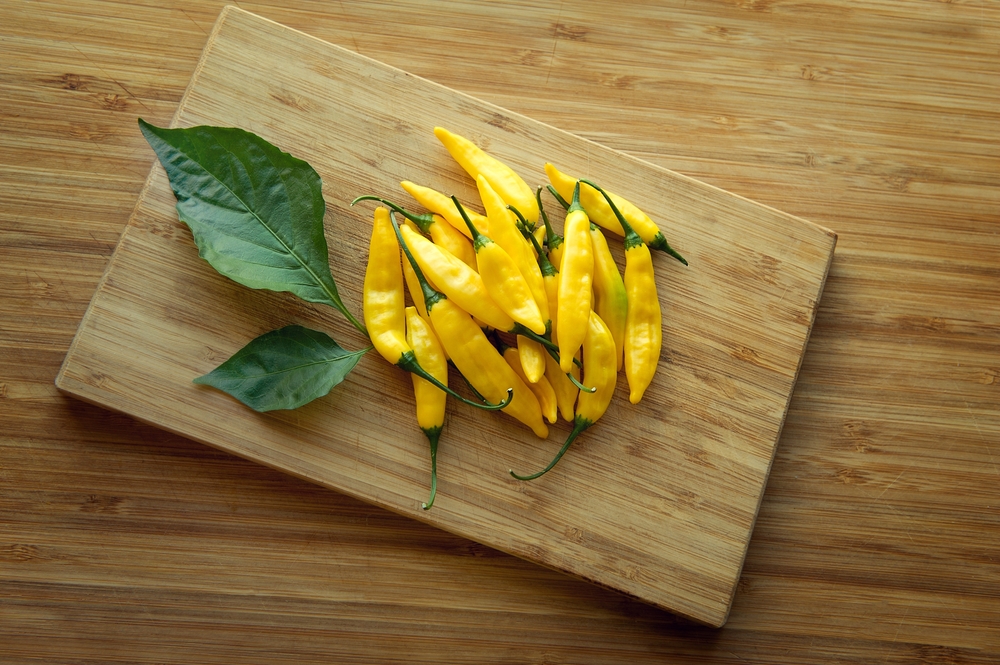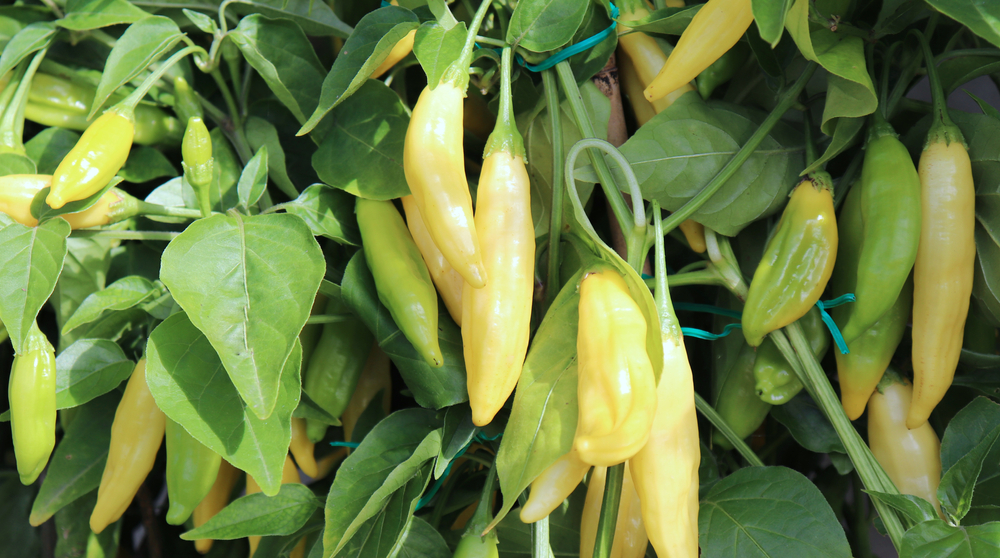When you think of hot peppers, the colors that come to mind are typically red or orange. Yellow, however, is the color of the Peruvian lemon drop pepper, and it's just one of the things that makes this spicy ornamental pepper so unique.
What Are Lemon Drop Peppers?
Lemon drop peppers are beautiful, ornamental peppers that can add visual interest to your garden and flavor to your recipes.
This golden-yellow hot pepper is a member of capsicum Baccatum. It has a tangy citrus flavor that makes it as valuable for its taste as it is for its beauty.
However, they’re an unusual pepper and can be hard to find in many areas.
Lemon Drop Pepper Quick Facts
Origin: Peru
Color: Bright yellow to golden-yellow at maturity
Taste: Bright, tangy flavor with citrusy undertones
Size: 2-3 inches in length with a tapered shape.
Other names:
- Qillu uchu
- Kellu uchu
- Aji lemon drop
- Aji limon

How Spicy Are Lemon Drop Peppers?
On the Scoville heat scale, lemon drop peppers measure 15,000-30,000 Scoville heat units (SHUs), putting them squarely in the pleasant medium heat range. They provide a punch without being overwhelming. It also has a heat that quickly fades, allowing the pepper’s flavor to come through and be enjoyed.
To understand how the lemon drop pepper’s heat level compares to other popular chili peppers, consider the following:
- Habanero pepper, 100,000-350,000 SHUs
- Tabasco pepper, 30,000-50,000 SHUs
- Cayenne pepper, 30,000-50,000 SHUs
- Lemon drop pepper, 15,000-30,000 SHUs
- Serrano pepper, 10,000-25,000 SHUs
- Jalapeno pepper, 2,000 – 8,000 SHUs
How To Use Lemon Drop Peppers
Lemon drop hot peppers are incredibly versatile. Their citrusy, fruity flavor, and short-lived heat make them excellent peppers for various recipes beyond salsas and hot sauces.
One classic Peruvian recipe using lemon drop pepper is Aji de Gallina. The heat level in this warm and creamy chicken dish can be scaled up or down with the number of peppers incorporated.
If a fresh salsa is what you’re craving, substitute lemon drop peppers for jalapenos or serranos for your favorite recipe.
For a fun twist on a traditional hot sauce, try this Lemon Drop Pepper Hot Sauce recipe.
Do Lemon Drop Peppers Turn Red?
The general rule is that all peppers will turn red when left on the plant. But like all rules, there are exceptions, and lemon drop peppers are one of them.
Lemon drop peppers don’t turn red as they ripen. Instead, they’ll deepen to a golden-yellow color and, with enough time, turn a blueish-purple.
Where To Buy Lemon Drop Peppers
You’re probably right if you don’t see lemon drop peppers at the grocery store. These delightful chile peppers are difficult to find in mainstream markets.
You may find fresh lemon drop peppers at farmer’s markets or specialty stores during the growing season, but that’s certainly not a given.
Can You Grow Lemon Drops?
If you want to access lemon drop peppers, your best bet is to grow them on your own.

You can easily find lemon drop pepper seeds online and occasionally in local nurseries. They’re easy to grow and, like all peppers, prefer warm climates with full sun.
If planting from seed, start indoors 6-8 weeks before the last frost. Expect germination within 6-10 days after planting.
You can transfer plants to the outside garden or outdoor containers when:
- Plants have reached 2-3 inches in height, and
- The danger of frost has passed, and
- Nighttime temperatures remain above 50 degrees Fahrenheit
Lemon drop pepper plants will become bushy as they grow, so ensure proper spacing when planting.
They will require 8-10 hours of sun, but if temperatures reach 100 degrees Fahrenheit for an extended time, consider shading your plants to prevent sunburn.
Substitutes For Lemon Drop Peppers
If you can’t find lemon drop peppers and don’t have time to grow your own, you can substitute other peppers.
The most apparent substitutes are habanero peppers or scotch bonnets, which have a similar flavor profile. However, these peppers are significantly higher on the Scoville heat scale, so less will be required to achieve the same heat level.
Serrano peppers can also work, but the flavor will be a bit brighter and more verdant.

